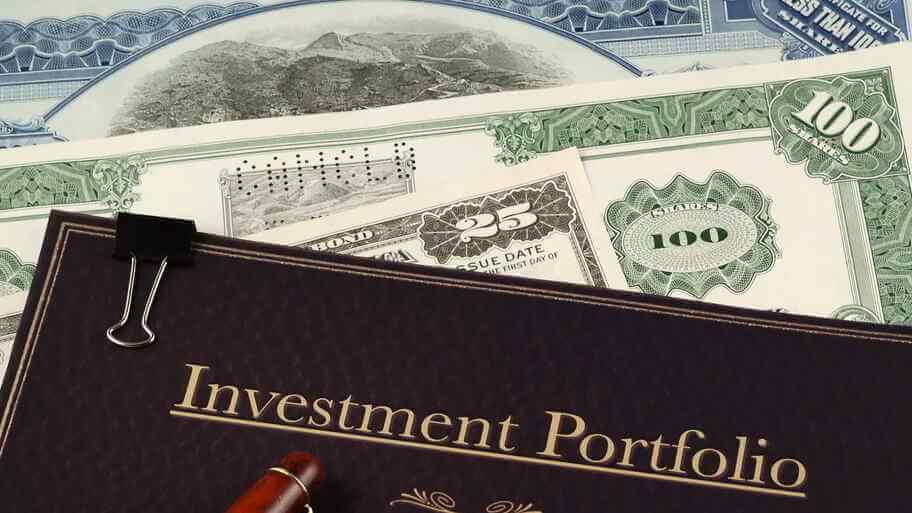Investing is an excellent way to build wealth and grow your income over time. You’ll notice that there are many different investment vehicles to park your money in, including bonds, ETFs, stocks, and IRAs. One of the most important things to consider when deciding on the best spot for your money is the typical investment fees that apply.
Banks don’t develop investing platforms charitably. Every time you buy, sell, or even open an account, you can expect to pay investment fees. Keep reading to understand the 4 most typical investment fees and how to minimize them.
What Are Investment Fees?
Investment fees are the charges from your broker for the services they offer. Whether it’s a fee for opening a brokerage account or a commission on a stock trade, it’s important to understand typical investment fees and how they can make or break your investment portfolio.
5 Types of Fees
You may come across many types of fees while investing or researching what brokerage is right for you. Here are the 4 most typical fees that you will come across and how to minimize them.
1) Expense Ratio
What is it? A fee that is charged annually by mutual, index, and exchange-traded funds. It’s usually a percentage of your whole portfolio.
Expense ratios are typically higher on actively managed funds like mutual funds and lower on ETFs and indexes. The higher fees cover operating and administrative costs associated with managing your investments in an actively managed fund. On the other hand, indexes and ETFs are passively managed; they track a stock market index.
Actively managed funds may have fees of 1% or higher. But passively managed funds could be as low as 0.25% or even less in some cases. It can be expensive to hold an actively managed fund. But, it’s because stockbrokers often believe that their own expertise can make you more money in the end.
2) Trade Commission
What is it? A fee for whenever you buy or sell a stock. You could also be charged a commission when buying or selling options or ETFs.
Many brokerages charge a fee for trading stocks, options, futures, etc. However, these fees are currently getting lower and lower as more retail traders enter the market. You can find some very inexpensive brokers or even some that don’t charge these fees at all.
TD Ameritrade, Charles Schwab, E-Trade, Robinhood, and Interactive Brokers offer commission-free trading. If you don’t like these options, you can also find brokers that offer promotions, like free trading for your first month, or brokers that offer commission discounts for high-volume traders.
3) Mutual Fund Transaction Fee
What is it? A fee incurred when you buy or sell mutual funds.
While you will not be charged a commission fee for buying or selling mutual funds, a transaction fee may apply. These fees can range from $10-$80. Lucky for you, there are ways to minimize these fees or even get around paying them.
TD Ameritrade has more than 4,000 funds that have no transaction fees. Sometimes mutual fund companies will offer no transaction fees but roll the cost into the expense ratio. This is not always the case, but is something to look out for.
4) Sales Load
What is it? A sales commission given to the broker or salesperson that sells a mutual fund.
In contrast to an expense ratio, a sales load is a fee you cannot avoid. This is a sales charge that an investor pays to compensate the broker or salesperson that sold the fund. This charge is often expressed as a percentage between 3%-8.5%. FINRA does not allow sales loads to be over 8.5%.
There are a few different types of sales loads:
-
-
-
- Front-end: This fee is paid upfront when you invest your money. It is subtracted from your investment. Say you are investing $10,000 and the fee is 4%, then only $9,600 is actually invested.
- Back-end: The fees here are only paid when shares in the fund are sold. This can confuse investors as they aren’t exactly sure what they will be paying in fees. But fees typically decline every year until they disappear entirely after 5-6 years.
- Level: These sales charges usually have a 1% fee if shares are sold within the first year.
-
-
Note: If you are working with a financial advisor, you may also be charged a management fee, which is usually a percentage of the assets that the advisor manages for you.
5) 401(k) Fee
What is it? A fee paid to maintain the 401(k) plan.
A 401(k) investment plan is usually reserved for employees. They can tend to be a bit expensive, as the administrative costs may be higher. They also have a limited choice of investment products, making it difficult to maintain a low expense ratio.
Many of the fees are either charged as a percentage of your account or as a flat fee. These typical fees help pay for the costs of record-keeping, legal and trustee structures, and accounting.
Many employers will pay the fees for their employees. This means that employees are only responsible for the investment expenses. As this can get expensive, a way to minimize expenses is to contribute as much as possible to get your employer to match that amount.
The average expense ratio for a 401(k) plan is 1.37%. When considering retirement plan options, you should compare the fees involved to this average. However, you might also want to consider other features of plan providers before making a decision.
Take, for instance, Mass Mutual. Mass Mutual 401(k) fees tend to be a bit higher. If you look at the Mass Mutual 401(k) fee disclosures, their average expense ratio is 1.81%. This is a little higher than average. But, seeing how the company has been around for over 150 years, this can be a safer place to leave your money.
How Fees Affect Returns
Investment fees can dig into your investment gains. For instance, if your portfolio is up 10% for the year and your fees are 2%, your gains for the year are only 8%. This might not seem like a huge deal since 8% is still a good return, but it can add up to a huge amount of lost revenue.
If you were to put $100 a month into a brokerage account at an 8% return per year, and your broker charged a 2% fee, after 30 years, your account would be up to $106,305. Great! However, you would have paid over $50,000 in fees. This is an extra $50,000 that could be earning you more of a return if you would’ve chosen a broker with better fees.
How can you find information about your broker’s fees? You can always go to your broker’s website and check the expenses or fees section. Shop around to find the best deal for you.
Are fees lower with an independent brokerage vs. franchise? Sometimes independent brokers offer lower fees. However, it depends on the individual brokerage. You should compare several options before settling on a brokerage.
Being Smart with Your Investments
It can seem daunting to compare all the numbers and terms when comparing options to invest your money. Luckily, when it comes to finding a place to park your money, the first place you choose does not have to be permanent.
Let’s say you decide you want to invest a small sum of money into an index fund. The expense ratio is higher than average, but the payoff is they don’t have an account minimum. Since your account does not have a lot in it, the expenses don’t seem like much.
But let’s say your account grows more than expected, or you contribute a lot more. Now those expenses are eating away at your gains. What should you do?
You can use the Automated Customer Account Transfer Service (ACATS). This system allows you to transfer assets from one brokerage account to another. This can let you transfer your investments to a lower expense account.
Another way to transfer assets to another account is to transfer your ESPP to a brokerage account. An ESPP is an employee stock purchase plan. This allows employees to purchase company stock at a discounted rate, usually through payroll deductions. Transferring stocks you’ve acquired through your ESPP to a low-cost brokerage account can allow you to trade or sell those stocks with lower costs.
Knowing about the typical investment fees that are associated with investing will help you develop your portfolio for future financial gains.
Featured Image: Megapixl








